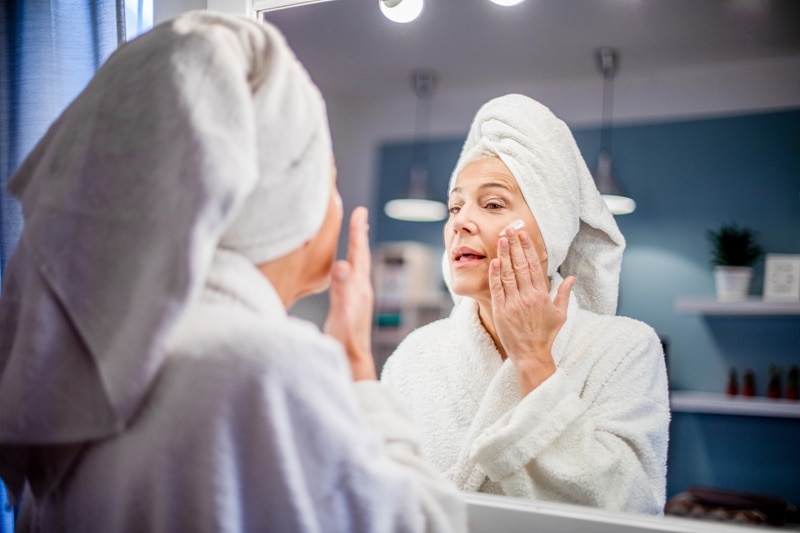Common cosmetic procedures, such as fillers, facials and microneedling, are typically harmless, but issues may arise if you don’t give your skin and face enough time and care to properly heal. If you immediately resume your usual skin and beauty regimen, activities and lifestyle, you are putting your skin at risk of experiencing adverse reactions and side effects. Post-treatment care is critical and should never be skipped, as it helps maximize results and minimize complications and irritation with sufficient healing.
“After cosmetic procedures, the skin barrier is often compromised and more vulnerable to irritation, infection and sun damage,” explained Dr. Shamsa Kanwal, M.D., a board-certified dermatologist with over 10 years of clinical experience as well as consultant dermatologist and expert dermatologist contributor to The Upside. “Proper aftercare protects this delicate phase and supports collagen remodeling, hydration and skin barrier repair,” Kanwal says.
Neglecting post-procedure care can lead to various side effects, including acne breakouts, inflammation, prolonged redness, changes in pigmentation and even scarring. While these concerns are applicable to all cosmetic treatments and procedures, some are riskier, especially if abrasive or complex. “Treatments like microneedling and laser resurfacing tend to need more rigorous aftercare compared to basic facials or superficial peels,” Kanwal said.
Basically, the more invasive or deeper the procedure is will dictate how critical and tedious the safe healing and recovery process needs to be before resuming your typical routine or lifestyle. Here are a few popular cosmetic procedures with tips for healing, what’s best to avoid, duration to expect based on the treatment and the best products to use for a smooth and easy recovery.
Healing Tips: What to Do After Microneedling, Fillers, Facials & More
How to treat skin after getting fillers
Dermal fillers are injectable treatments that help restore facial volume, smooth fine lines and enhance facial features, such as the lips and cheeks or under the eyes.
“They’re commonly made of hyaluronic acid, a naturally occurring substance in the skin, and are injected beneath the surface using fine needles or cannulas,” Kanwal explained. Results are typically immediate, but you may experience mild swelling or bruising following the procedure. In this case, using a cold compress and perhaps taking tylenol or ibuprofen can minimize the inflammation and pain.
“After getting a filler treatment, patients should use a cold compress for 10–15 minutes every few hours for the first 24 hours to minimize swelling as well as avoid exercise, hot showers, saunas and alcohol for at least 24–48 hours, as heat and blood flow can worsen swelling and bruising,” Kanwal said.
Hydrate well, use a gentle moisturizer with SPF in the day, and avoid massaging or sleeping on the treated area for a few nights to allow the filler to settle properly and safely for best results. Going makeup-free and swapping booze for water for a few days during recovery also reduces irritation and inflammation, so resist the urge and wait it out.
Tips for healing after facials
“Facials are professional skin treatments that cleanse, exfoliate, hydrate and treat specific skin concerns like acne, dullness or dehydration,” Kanwal explained.
They typically involve cleansing, exfoliation, extractions, masks, topicals like serums, massage or facial technique, hydration and moisturization.
“While generally safe, even gentle facials can temporarily disrupt the skin barrier or make the skin more sensitive, especially after exfoliating or extraction-based steps,” Kanwal said. Taking proper measures post-facial will reduce the risk of developing unwanted effects.
After a facial, avoid direct sun exposure and wear SPF diligently, such as in a daily moisturizer or face cream, since your skin may be extra photosensitive following the procedure. You should also skip the makeup and go natural for at least 24 hours to prevent clogging beautiful, freshly cleaned pores. And, avoid topicals with rough textures, such as exfoliants, acids and retinoids.
“Don’t use active ingredients like retinol or exfoliating acids for 48–72 hours, and avoid hot showers or washing your face immediately after the treatment,” Kanwal said. Stick to soothing, hydrating products and give skin time to heal and calm before returning to your usual routine.
How to treat skin after microneedling
“Microneedling is a collagen induction therapy where tiny needles create micro-injuries in the skin to trigger healing, stimulate collagen production and improve concerns like acne scars, fine lines or enlarged pores,” Kanwal said. It’s minimally invasive, but skin may be red or feel tight or warm for a few days following a microneedling cosmetic procedure, resembling a mild sunburn.
After microneedling, it’s essential to treat your skin carefully and use gentle products to prevent irritation or infection. Avoid heat and sun exposure, and if outside wear broad-spectrum SPF. It is also important to take a break from exercise for at least 48 hours, and ease back in based on how your body is feeling.
“Use only fragrance free and hydrating products, such as hyaluronic acid, and avoid shaving your face or applying retinoids, exfoliants or harsh actives until skin fully heals,” Kanwal said. Cold compresses and Tylenol can help with any swelling or tenderness, too. Plus, don’t touch your face, no matter how tempting it may be.
“Never pick at peeling or flaky skin, as this may interfere with the healing process and cause scarring,” Kanwal warned.
Best Skincare Tips Post-Treatment
“After any cosmetic treatment, it’s best to cleanse the skin gently using a mild, fragrance-free cleanser and avoid scrubbing or using hot water for at least 24 to 48 hours,” Kanwal said.
Skip makeup for one or two days to let skin breathe, especially after microneedling or deep facials. Don’t use abrasive techniques or topicals for a couple of days to be safe.
“Exfoliation should be paused for at least five to seven days post-treatment or longer depending on skin sensitivity and the procedure type, and stick to hydrating, barrier-supporting products that include ingredients like ceramides, hyaluronic acid and niacinamide during recovery,” Kanwal recommended.
In general, it’s a good idea to space out more intense or invasive treatments, like microneedling and peels, over simpler procedures like facials. Aim to schedule microneedling or peels at least 4–6 weeks apart and facials once monthly.
“Avoid scheduling strong chemical peels or laser treatments back-to-back,” Kanwal said. Sensitive or rosacea-prone skin types are more prone to agitation from cosmetic treatments that are overly abrasive in procedure and thus may benefit from gentler options, like enzyme facials or LED light therapy. People with sensitive or reactive skin should consult a dermatologist before combining procedures, too.
“Personalized spacing and recovery time ensure optimal results and minimize the risk of side effects like redness, dryness or post-inflammatory hyperpigmentation,” Kanwal said.
Best Products to Use After Cosmetic Procedures
Vanicream Facial Moisturizer Broad Spectrum SPF 30
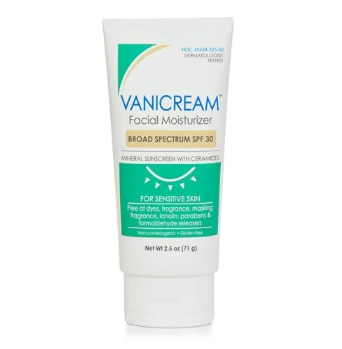 This moisturizer is a great choice post-treatment, especially for sensitive skin. “It’s fragrance-free, paraben-free, broad-spectrum and formulated for sensitive skin, and zinc oxide provides mineral-based sun protection, making it ideal for inflamed or healing skin,” Kanwal said.
This moisturizer is a great choice post-treatment, especially for sensitive skin. “It’s fragrance-free, paraben-free, broad-spectrum and formulated for sensitive skin, and zinc oxide provides mineral-based sun protection, making it ideal for inflamed or healing skin,” Kanwal said.
When choosing an SPF moisturizer, look for ingredients like ceramides, glycerin, squalane and zinc oxide, which soothe, hydrate and protect skin without clogging pores or stinging sensitive areas.
Pacifica Vegan Ceramide Extra Gentle Face Wash
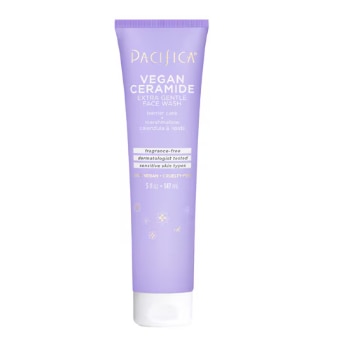 This gentle, non-stripping cleanser is ideal for sensitive skin types and post-treatment recovery.
This gentle, non-stripping cleanser is ideal for sensitive skin types and post-treatment recovery.
“It contains ceramides and calendula, which help restore the skin barrier and reduce redness or irritation, while being free of sulfates, parabens and fragrance,” Kanwal said. Avoid exfoliate acids, alcohol and harsh surfactants, and choose pH-balanced formulas containing ceramides, glycerin and calendula. “A good cleanser should cleanse without leaving skin tight, dry or reactive,” Kanwal said.
Tree to Tub Deep Hydrating Moisturizer for Sensitive Skin With Green Tea
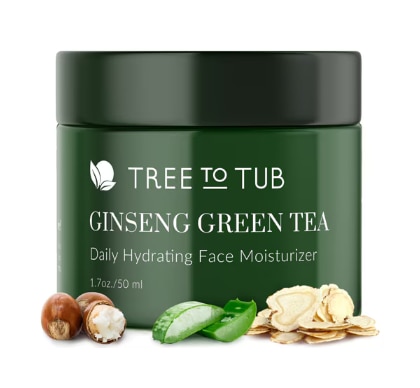 This is a simple and soothing cream for increasing hydration and barrier support or comfort, making it an ideal moisturizer following a cosmetic procedure.
This is a simple and soothing cream for increasing hydration and barrier support or comfort, making it an ideal moisturizer following a cosmetic procedure.
“Green tea brings antioxidant and calming support without heaviness,” Kanwal said. So, it’ll help nourish skin and speed recovery.
Burt’s Bees Calming Day Lotion with Aloe and Rice Milk
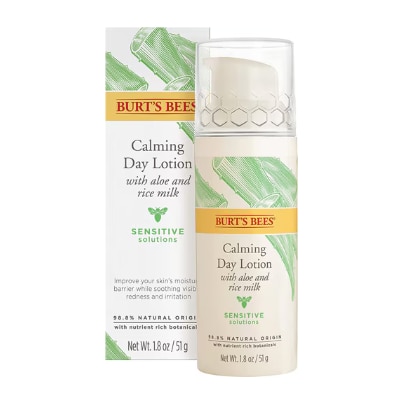 This lotion has aloe and rice milk to boost hydration and calm skin as well as a nice lightweight consistency. “It has botanicals chosen for comfort, and it is a nice daytime option for after gentle facials or light peels when you want moisture without sting,” Kanwal said.
This lotion has aloe and rice milk to boost hydration and calm skin as well as a nice lightweight consistency. “It has botanicals chosen for comfort, and it is a nice daytime option for after gentle facials or light peels when you want moisture without sting,” Kanwal said.
Aveeno Calm + Restore Triple Oat Serum for Sensitive Skin
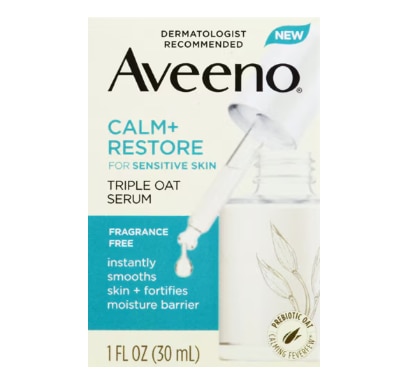 The triple oat complex helps quiet visible redness and support skin barrier. “The fluid serum layers easily under your moisturizer and SPF, making it a great bridge product to use after microneedling,” Kanwal said. Just be sure your clinician gives a green light to resume topicals.
The triple oat complex helps quiet visible redness and support skin barrier. “The fluid serum layers easily under your moisturizer and SPF, making it a great bridge product to use after microneedling,” Kanwal said. Just be sure your clinician gives a green light to resume topicals.

